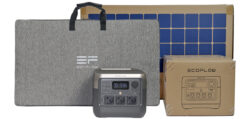
EcoFlow Powerstation Layout, design and features …
Here you can see the EcoFlow River 2 Pro Powerstation in front of the bag with the folded EcoFlow 220W solar panel to get an impression of how small and handy the powerstation is despite the good performance.
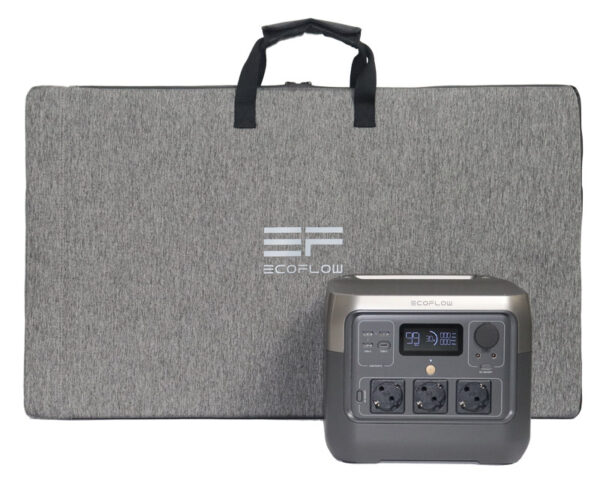
In the center of the device’s front, there is an easy-to-read display with the runtime in hours and percent as well as the current input and output rates.
The power station offers all outputs on the front. On the top left you can see 3x USB-A and 1x USB-C. To the right is the car port under a protective cap, and two DC5521 sockets for charging notebooks and a button for switching on the DC power supply are integrated underneath. In the middle there is a gold/yellow power button with an operation LED. And last but not least, there are 3x 230V type F plug sockets with a button to switch on the AC power supply.
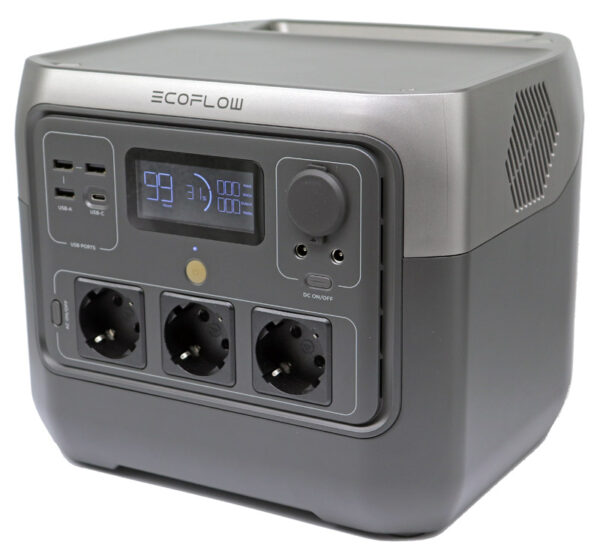
On the back, just behind the handle, only two sockets have been integrated as inputs – a cold appliance socket for the power supply via 220-240V (different voltage types available) AC socket and a socket for the 11-50V DC input from the solar panel or the car charging cable.
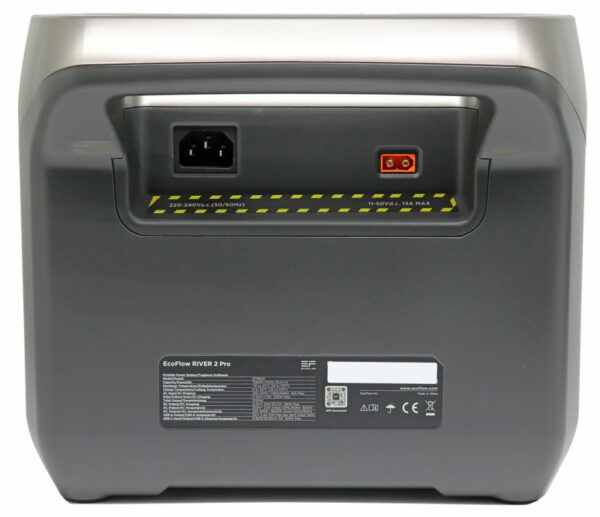
Of course, we also opened the Powerstation to get a better picture of the workmanship and the chosen components.
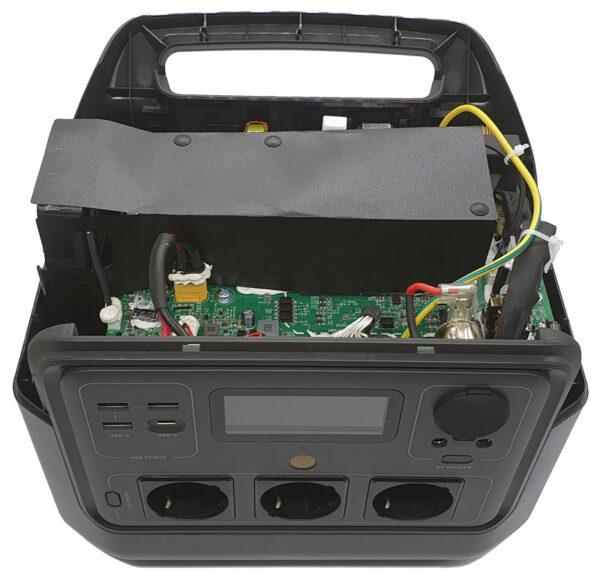
The Fan Duct, which we have already explained in the video on YouTube, is especially eye-catching here. The Fan Duct is a fan channel that is supposed to provide maximum cooling for certain components. However, in our opinion, this fan duct in the EcoFlow Powerstation is equipped with a fan that is too small for the desired cooling performance, which has to rotate quite high-speed for a good airflow. Instead of the 60 mm fan, an 80 mm fan, possibly with a larger fan duct, would make much more sense to reduce the noise development.
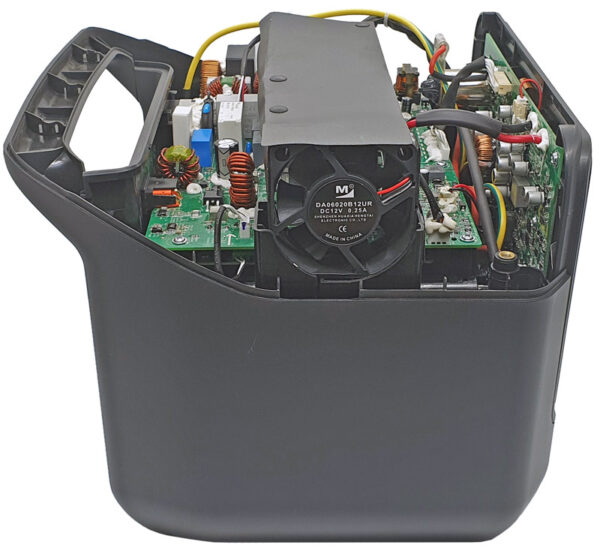
At the very bottom underneath all the electronics are the LiFePO4 (LFP) battery cells with a capacity of 40Ah and 19.2V, which gives us a total capacity of 768Wh. The LiFePO4 or LFP batteries are made of lithium iron phosphate and are, in contrast to conventional lithium ion batteries, significantly safer and more durable, thus tolerating more charging cycles. According to the data sheet, they offer more than 80 percent at 3000 cycles and that is rather understated. With conventional Li-Ion batteries, which were installed in the EcoFlow Delta Max or the EcoFlow River of the first generation, for example, it is only about 800 charging cycles with over 80 percent.
Even though we would still have some ideas on how to optimize the design, the workmanship of the power station is at least well done. Even all important cables are secured against unintentional loosening and the fixation reduces possible vibrations in some components (e.g. coils).
Continuing with the EcoFlow River 2 Pro Powerstation installation …
